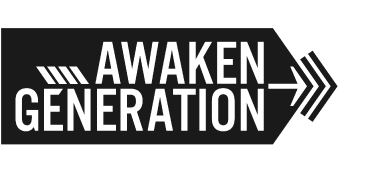Bass: 3 things you can play besides root notes
BASS. If you’re reading this, you probably have a passion for it, and/or the instruments that produce those frequencies. And for that, I shall dub thee a ‘Low-end Lover’!
This article addresses the felt need shared amongst many a low-end lovers who play in church: ‘Can I do anything beyond playing the correct root notes in time?’ Yes, and I will share some simple approaches you may use to ace up your bass and provide not just a conducive atmosphere for worship, but also through your playing reflect the excellence, beauty, and creativity of the original Creator of groove, harmony, and melody Himself.
But first, what is your role as a bass player?
The Role of the Bass
A general school of thought is that the bass helps to maintain the framework of the music, within which the rest of the band can be free to explore. ‘Framework? Say what?’ Abstract, I know.
The framework is made up of rhythmic and harmonic boundaries - in other words, the groove and the chords of a piece of music, among other elements. Think of a framed-up painting - most artists would not purposely paint outside of the frame and onto the walls. Keeping the paint within the frame - that’s a huge part of the bass’ role. It’s about keeping the groove and chords clear.
Failing to do this would cause the music to sound messy or dissonant, both of which I presume are not #ministrygoals for you. (If they are, why are you reading this?)
So how do you fulfil this? Simple - ensure that you do not deviate too much from the prearranged grooves and chord progressions (a.k.a. chord changes) in a song. If the progression was G-C-G-C in a straight rock groove, don’t play G-Bm-Em-C Bossa-novishly!
Now, on to the juicier, tastier stuff - the 3 things (out of many) you can play on your bass during your church set besides root notes. -Rubs hands-
(One caveat though: Depending on your background, you may need Google ready!)
Passing Notes
This principle involves moving from one chord to another via a route of in-between, related notes, to outline the chord changes (related to ‘walking bass’). For example, ask: How can I ‘travel’ from G to C in a less-than-direct way?
So from G to C, you could use the notes A and/or B (in-betweens) as part of your route; or even traveling down from notes E to D to C.
Using passing notes creates a sense of movement, which adds energy - great for faster, more upbeat songs.
Inversions
Each chord is made up of a combination of notes, called chord tones. For example, a G major triad (chord or three tones) is made up of the root (G), 3rd (B), and 5th (D). A chord inversion is when the chord tones are rearranged, such that the bass (or lowest) note is no longer the root note, but the 3rd or 5th.
During a G Major chord, most bass players would play the root - in this case, the G note. That’s a good thing, please do that. However, if you want to provide a lift, some tension, or a different tonal ‘colour’ (think of music notes and chords as a collection of strokes and colours on canvas, within that frame we talked about earlier) to engage listeners, you can play B or D during that G Major chord.
Apply this principle to other chords - find out what the chord tones of a chord are, and occasionally add variation by playing a chord tone other than the root. Try it out! Each inversion of each chord provides a very different feel. Get familiar with how each feels, so you’ll know when to use which.
Of course, use this tastefully - don’t play an inversion for every chord! This risks distracting - or worse, confusing - the listener, which causes us to ‘lose’ the congregation.
Chords
“Chords? On a bass?? Is you mad?!” Nope, not right now at least. I would be if you didn’t read on, though! (: Chords on a bass can offer not just added colour, but also provide additional harmonic support for especially sparse portions or stripped-down setups, such as: 1 keyboard, 1 cajon, 1 bass, 0-1 acoustic guitar.
I’m not asking you to play an entire triad. Try and stick to just two notes when playing chords on bass, and do not play them too closely together. All this is to avoid them sounding like your football boots look after a match in the rain - muddy.
For example, during a soft C-D-Em progression, try these shapes for simple root/third chords:
C: E string, 8th fret (C) + G string 9th fret (E, its major third)
D: E string, 10th fret (D) + G string 11th fret (F#, its major third)
Em: E string, 12th fret (E) + G string 12th fret (G, its minor third)
Conclusion
There are tonnes of other ways you can use and incorporate the above tips into your playing. Experiment at home, figure out what you like, expand your musical vocabulary, and add them into your arsenal. So whenever you need it, you’re ready to whip it out and take the song to another level!
There you have it! Three simple, straightforward, and immediately applicable handles you can adopt and use in your church set. I’m excited for how you guys will benefit from this!
Keep it groovy, low-end lover.


